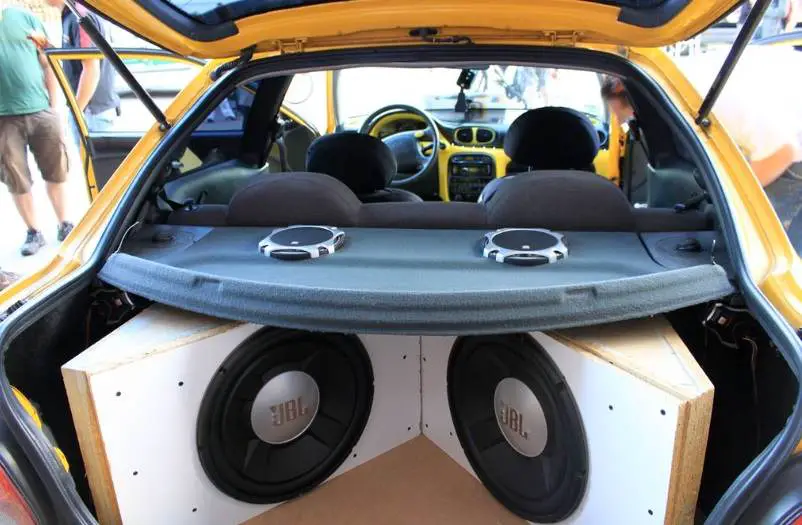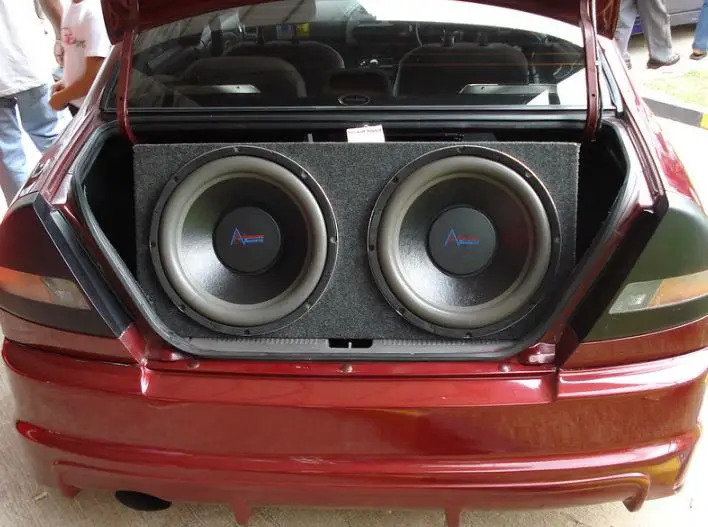A subwoofer is a speaker designed to produce low frequency sound, also known as bass.
It is a crucial component in a car audio system as it enhances the overall listening experience by providing deeper and more powerful bass.

In this article, we will guide you through the process of installing a subwoofer in your car.
By the end of this article, you will have a comprehensive understanding of the tools and materials needed, the steps involved, and the adjustments required to get the best sound from your new subwoofer.
Tools and Materials Needed
Before starting the installation process, it is essential to gather all the necessary tools and materials. Here is a list of items that you will need:
- Subwoofer
- Amplifier
- Wiring kit
- Hole saw or template
- Drill
- Screwdriver
- Wire stripper and crimper
- RCA cables
- Speaker wire
- Sound dampening material (optional)
Most of these items can be purchased from a local car audio store or online. Be sure to check the compatibility of the subwoofer, amplifier, and wiring kit with your car before purchasing.
Preparing the Car
The first step in installing a subwoofer is to remove the factory audio system.
Depending on the make and model of your car, this process may vary.
Consult the car’s owner manual or a professional for specific instructions.
Once the factory audio system is removed, you will need to identify the location for the subwoofer.
This will typically be in the trunk or cargo area of the car.
The subwoofer should be placed in a location that has the most space and is away from any heat sources.
Once the location is identified, use a hole saw or template to measure and cut the hole for the subwoofer. If necessary, use sound dampening material to line the area around the hole to reduce any rattling or vibration.

Wiring the Subwoofer
There are several different ways to wire a subwoofer, but we will focus on the most common method, which is connecting the subwoofer to an amplifier using RCA cables and speaker wire.
The first step is to run the RCA cables and the speaker wire from the amplifier to the subwoofer location. The RCA cables will carry the audio signal from the head unit or source to the amplifier, and the speaker wire will carry the amplified audio signal to the subwoofer.
Next, strip the ends of the RCA cables and the speaker wire and connect them to the corresponding inputs and outputs on the amplifier and subwoofer.
Be sure to match the positive and negative terminals to avoid any damage to the equipment.
It is also important to properly ground the amplifier. This is typically done by connecting the ground wire to a metal surface in the car, such as a bolt or a grounding block.
Installing the Subwoofer
With the wiring completed, it’s time to install the subwoofer. Position the subwoofer in the hole and secure it in place using the provided hardware.
Connect the speaker wire to the subwoofer terminals, making sure to match the positive and negative connections.
Lastly, turn on the car’s audio system and test the subwoofer for proper function. If all the connections were made correctly, you should hear a significant improvement in the bass response of your audio system.
Testing and Adjusting the Sound
Once the subwoofer is installed, it’s important to test and adjust the sound to ensure that it is working properly and to your liking.
Start by playing a variety of music genres and listening for any distortion or rattling.
If you notice any issues, check the amplifier settings and adjust the crossover frequency and gain to match the subwoofer’s capabilities.
It’s also a good idea to experiment with different subwoofer placement and angles to find the best sound for your car.

Conclusion
Installing a subwoofer in your car can greatly enhance your listening experience by providing deeper and more powerful bass.
By following the steps outlined in this article, you should be able to successfully install a subwoofer in your car.
Remember to take your time, be patient and be sure to consult the owner’s manual or a professional if you have any questions or concerns.
We hope that you enjoy your new subwoofer and encourage you to share your experiences and ask questions.
Can I install a subwoofer in my car myself or do I need a professional?
Installing a subwoofer in your car is a relatively straightforward process that most people can do themselves with the right tools and materials.
However, if you are not confident in your abilities or have any concerns, it is always a good idea to consult a professional.
Is it necessary to use an amplifier when installing a subwoofer in my car?
An amplifier is necessary to power the subwoofer and provide the necessary audio signal.
Without an amplifier, the subwoofer will not function properly and will not provide the desired sound quality.
Can I install a subwoofer in any location in my car or is there a specific location that is recommended?
The best location for a subwoofer is typically in the trunk or cargo area of the car.
This is because these areas have the most space and are away from any heat sources. However, the location may vary depending on the make and model of your car.
Some people prefer keeping the subwoofer under the seats which can work well as long as there is enough room and the area is free from heat sources.
How do I know if the subwoofer is properly wired and connected?
You can test the subwoofer by playing a variety of music genres and listening for any distortion or rattling.
If you notice any issues, check the amplifier settings and adjust the crossover frequency and gain to match the subwoofer’s capabilities.
If you are still unsure, consult the owner’s manual or a professional.
What should I do if I notice rattling or distortion after installing the subwoofer?
Rattling or distortion can be caused by a variety of factors, such as improper installation or poor sound dampening.
If you notice these issues, try adjusting the amplifier settings and experimenting with different subwoofer placement and angles.
If the problem persists, consult the owner’s manual or a professional for further troubleshooting.
Note: It’s also a good idea to use sound dampening material around the subwoofer to prevent rattling and vibrations.
